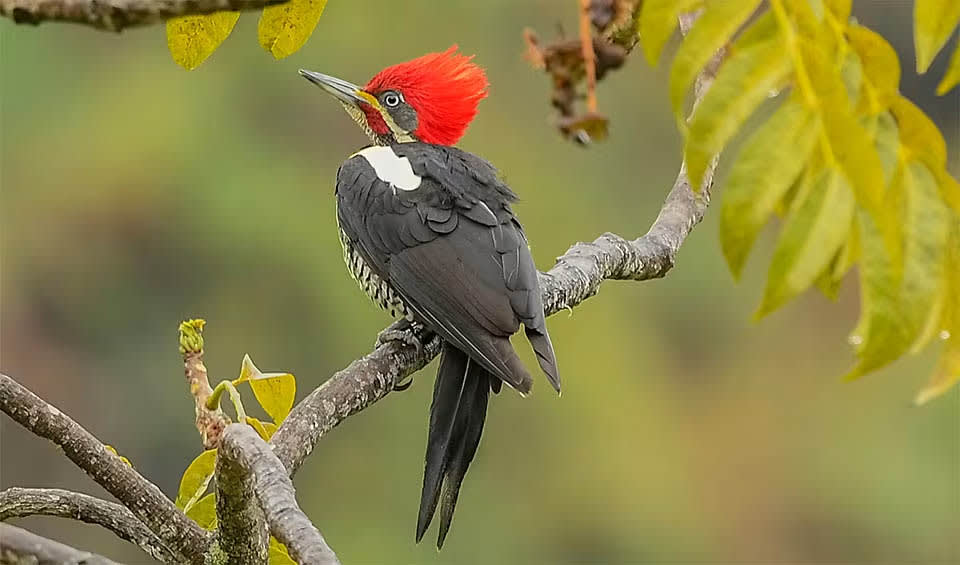This species is one of the larger woodpeckers, approximately the size of a crow, and is notable for its vibrant markings and robust behavior, making it a fascinating subject for both bird enthusiasts and casual observers.
Visually, the lineated woodpecker is quite impressive. It features a predominantly black body with a white stripe running down the neck and another across the face, which gives it a distinctive, masked appearance. The male has a bright red crest on the top of his head, which adds a splash of vivid color and can be quite conspicuous against the backdrop of the green forests. Females also have a red crest, but it’s less extensive than the males, typically seen only at the front rather than the full crest.
One of the most defining characteristics of the lineated woodpecker is its powerful bill, which is well adapted for pecking at wood. Like other woodpeckers, this bird uses its sharp bill to drill into trees to find food. It primarily feeds on insects, especially beetle larvae hidden under the bark, and occasionally fruits and nuts. The pecking also plays a crucial role in their communication, particularly during the breeding season when the drumming helps establish territory and attract mates.
The lineated woodpecker is known for its ability to adapt to various environments but prefers mature forests or areas with large trees, including plantations and parks. Despite their preference for dense forests, they are also quite comfortable in suburban areas where trees are abundant. This adaptability helps them thrive in a range of conditions and extends their reach across different geographic areas.
Distribution
 Argentina
Argentina Belize
Belize Bolivia
Bolivia Brazil
Brazil Colombia
Colombia Costa Rica
Costa Rica Ecuador
Ecuador El Salvador
El Salvador French Guiana
French Guiana Guatemala
Guatemala Guyana
Guyana Honduras
Honduras Mexico
Mexico Nicaragua
Nicaragua Panama
Panama Paraguay
Paraguay Peru
Peru Suriname
Suriname Trinidad & Tobago
Trinidad & Tobago Venezuela
VenezuelaAnything we've missed?
Help us improve this page by suggesting edits. Glory never dies!
Suggest an editGet to know me
Terrestrial / Aquatic
Altricial / Precocial
Polygamous (size) / Monogamous
Dimorphic / Monomorphic
Active: Diurnal / Nocturnal
Social behavior: Solitary / Pack / Herd
Diet: Carnivore / Herbivore / Omnivore / Piscivorous / Insectivore
Migratory: Yes / No
Domesticated: Yes / No
Dangerous: Yes / No




